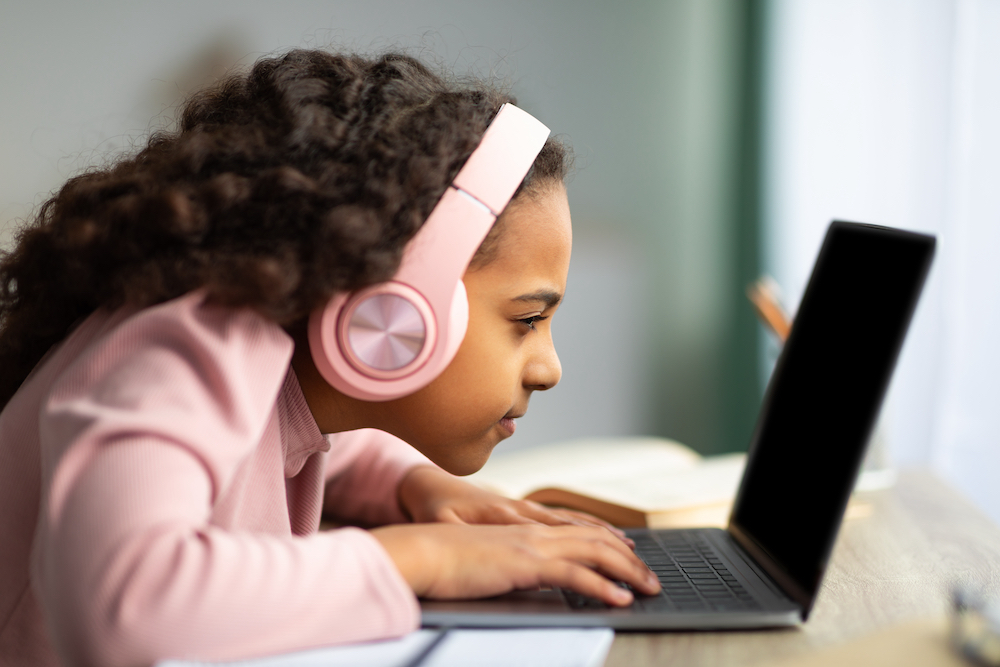
Myopia is the most prevalent of all the refractive errors and eye conditions affecting people. According to the American Optometric Association, over 40% of Americans have myopia, increasing by 25% in the last 50 years. Nowadays, children as young as three years old are diagnosed with the condition.
The condition that affects distance vision manifests in telltale signs in young children. Most children who develop this condition do not know they have an issue. They think everyone sees the same way they do. It thus falls upon you, the parent, to notice the signs and symptoms, or to bring them to an optometrist who can detect them.
What Is Myopia?
Nearsightedness or myopia affects distance vision. Things get blurry as they get further from your face and clearer as they get close. The condition develops in early childhood and progresses as you age. It occurs when the eyeball elongates, affecting how the light refracts and where it focuses.
The continuous elongation of the eye and the bulging of the cornea is called myopia progression. This usually continues until vision stabilizes between 18 and 20 years old. Sometimes, however, the progression may continue into adulthood.
Signs of Myopia in Children
Children who develop myopia may start acting a little differently. In the beginning, the changes may be subtle, but they become more pronounced as they age. As a parent, you must be keen to notice these changes early so you can take your child to the eye doctor. The eye doctor may institute myopia management strategies to help slow the condition's progression. So, what are the signs of the condition?
Squinting
Squinting is one of the first telltale signs of a child developing myopia. Children with myopia will often squint when trying to look at something a little far off. While people typically squint when struggling to see something quite far away, you will notice that the object the child is trying to focus on is usually very close. When this happens constantly, it is a clear sign they have a visual problem, most likely myopia.
Sitting Closer to the TV or Holding Things Close to the Face
While it is normal for children to sit close to the TV, you may notice they sit much closer when they develop myopia. This adjustment is a result of developing poor vision. You may also notice that even if they sit close, they still squint their eyes. They may also start holding things close to their face to see them clearly.
Complaining of Headaches
When a child constantly complains of headaches, it is a sign they may have visual issues. Visual issues like myopia exert significant pressure on the brain to focus, leading to headaches.
Rubbing the Eyes
If your child is constantly rubbing their eyes, it could be a sign they have a visual issue. Rubbing their eyes could be a sign they are feeling ocular discomfort. It is vital to notice this if your child is too young to recognize a headache.
Myopia Management
Often times when a child is diagnosed with myopia at a young age, the myopia increases over time. In the past, the only options were to monitor the change and continue to prescribe stronger glasses. However, now there are better options to monitor and control myopia.
Eye Drop Therapy
The LAMP2 study which was published February 14, 2023 examined the effect of low concentration atropine against myopia inidence in children. The study found that nightly uses of low concentration atropine eye drops significantly lowered the incidence of myopia in children between 4 and 9 years old
Orthokeratology
Rigid gas-permeable or hard contact lenses can be fit in a certain way to stabilize myopia and in some cases lower myopia. Orthokeratology contact lenses are modified hard contact lenses that individuals wear when they sleep. As they sleep, the contact lens changes the shape of the cornea. When they wake up, they remove the contact lens. This allows for clear vision for the day until the cornea returns to its original shape. Orthokeratology lenses have been shown to stabilize and lower myopia.
Daily Disposable Soft Contact Lenses
There are several daily disposable contact lenses that are used to manage myopia. These work differently than orthokeratology lenses. These soft contact lenses are similar to multifocal contact lenses, which have a slight blurring effect in the periphery. Eyesight is still clear with these contact lenses and they have shown to help stabilize myopia as well. The benefits are good eyesight and the contact lenses are very comfortable to wear during the day.
For more on signs of myopia in children, to have your child evaluated or to discuss ways to manage the myopia, contact Eversee Boutique Eyecare at our office in Winnetka, Illinois. Call (847) 386-9045 to book an appointment today.






